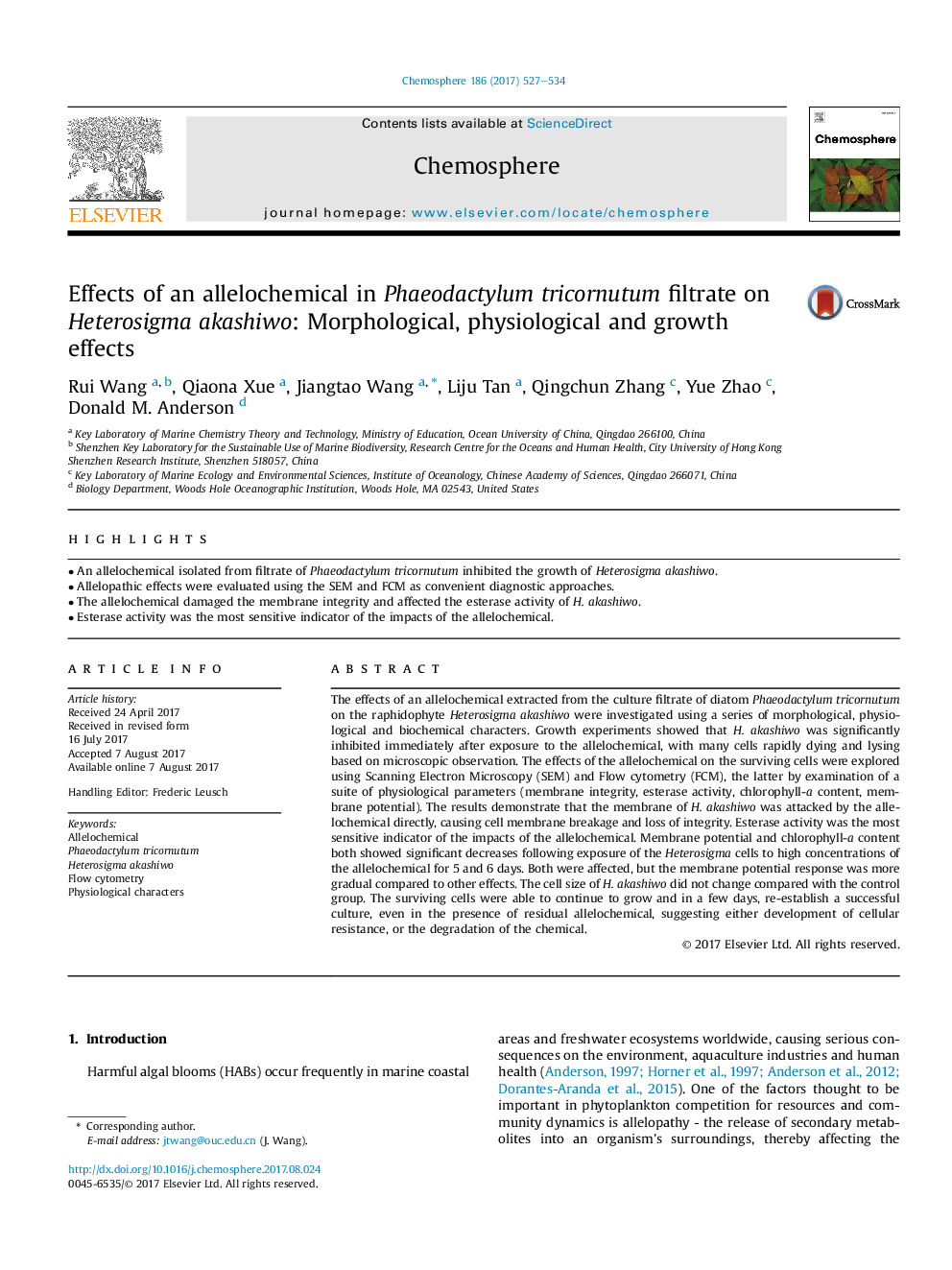| Article ID | Journal | Published Year | Pages | File Type |
|---|---|---|---|---|
| 5746063 | Chemosphere | 2017 | 8 Pages |
â¢An allelochemical isolated from filtrate of Phaeodactylum tricornutum inhibited the growth of Heterosigma akashiwo.â¢Allelopathic effects were evaluated using the SEM and FCM as convenient diagnostic approaches.â¢The allelochemical damaged the membrane integrity and affected the esterase activity of H. akashiwo.â¢Esterase activity was the most sensitive indicator of the impacts of the allelochemical.
The effects of an allelochemical extracted from the culture filtrate of diatom Phaeodactylum tricornutum on the raphidophyte Heterosigma akashiwo were investigated using a series of morphological, physiological and biochemical characters. Growth experiments showed that H. akashiwo was significantly inhibited immediately after exposure to the allelochemical, with many cells rapidly dying and lysing based on microscopic observation. The effects of the allelochemical on the surviving cells were explored using Scanning Electron Microscopy (SEM) and Flow cytometry (FCM), the latter by examination of a suite of physiological parameters (membrane integrity, esterase activity, chlorophyll-a content, membrane potential). The results demonstrate that the membrane of H. akashiwo was attacked by the allelochemical directly, causing cell membrane breakage and loss of integrity. Esterase activity was the most sensitive indicator of the impacts of the allelochemical. Membrane potential and chlorophyll-a content both showed significant decreases following exposure of the Heterosigma cells to high concentrations of the allelochemical for 5 and 6 days. Both were affected, but the membrane potential response was more gradual compared to other effects. The cell size of H. akashiwo did not change compared with the control group. The surviving cells were able to continue to grow and in a few days, re-establish a successful culture, even in the presence of residual allelochemical, suggesting either development of cellular resistance, or the degradation of the chemical.
